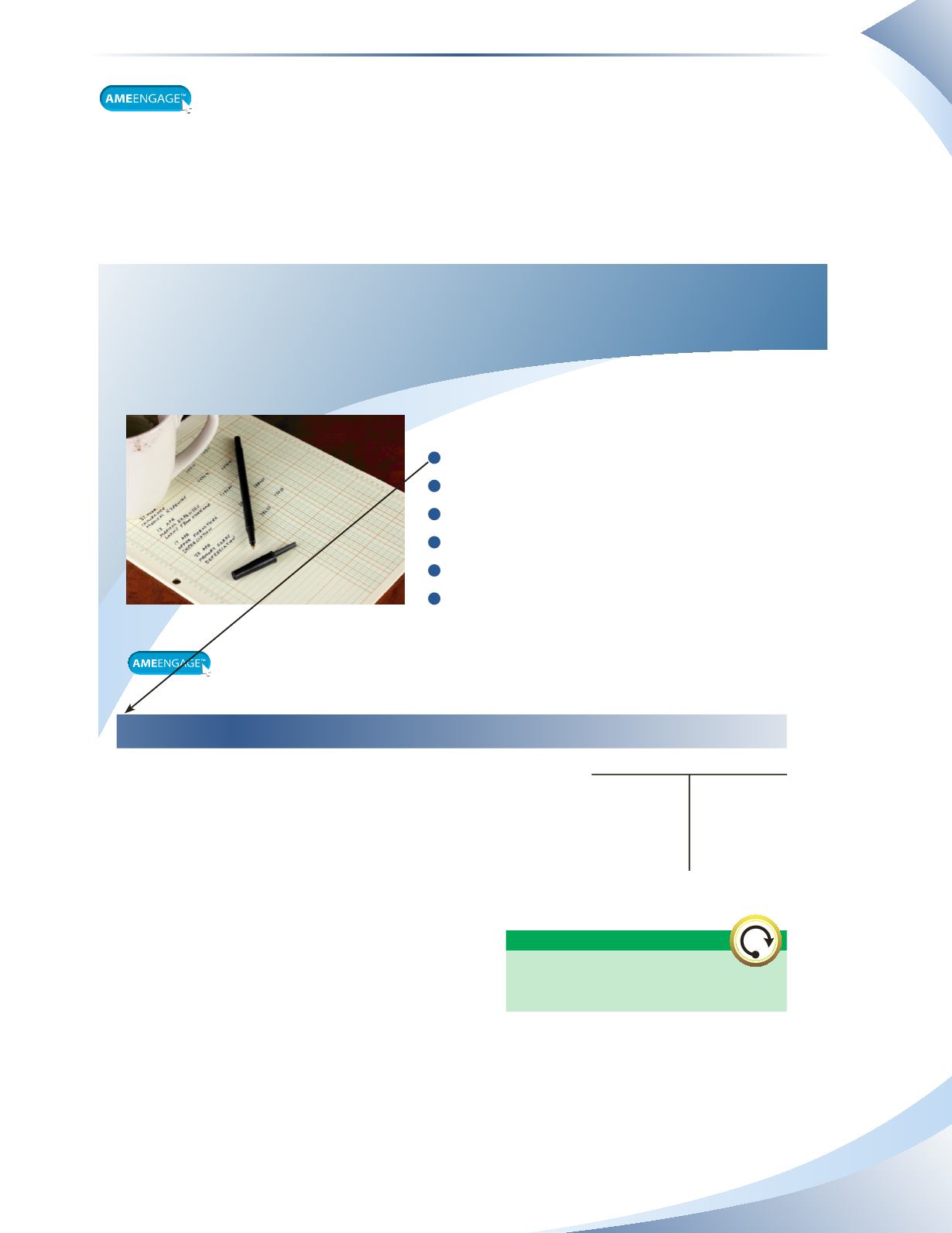
Introduction
vii
Every chapter has reminders for students to check their
online course for additional resources to help explain
the accounting topics.
The learning outcomes in each chapter are prepared using Bloom’s taxonomy. In the textbook, each
blue heading in the chapters is linked to at least one learning outcome.The learning outcomes are
also linked to all the questions in the workbook.
Chapter 4
The ACCounTing CyCle: JournAls And ledgers
Transition to debits and Credits
We have been using the terms increase and decrease
to record trans-
actions in T-accounts, but formal accounting requires the use of
debits and credits
.
In the debit and credit system (unlike increases
and decreases), a
debit
is always recorded on the left-hand side of
an account and a
credit
is always recorded on the right-hand side.
DR represents debits and CR represents credits.
Remember that debit and credit do not always mean
increase or decrease. A credit means an entry on the
right side of the account, and it may cause the account
to increase or decrease, depending on the type of ac-
count it is. Similarly, a debit means an entry on the
left side of the account and it may cause the account
to increase or decrease, depending on the type of ac-
count it is. Remember, the accounting equation is
Assets = liabilities + owner’s equity
In accounting, there are always at
least two parts to a transaction. For each
transaction, the total value of debits equals
the total value of credits. This is known as
double entry
.
WORTH REPEATING
leArning ouTComes
1
Distinguish between debits and credits
2
Describe the accounting cycle
3
Explain how to analyze a transaction
4
Record transactions in the general journal
5
Post journal entries to the general ledger
6
Prepare a trial balance
debit
dr
Credit
Cr
Access
ameengage.com
for integrated
resources including tutorials, practice
exercises, the digital textbook and more.
Access
ameengage.com
for integrated
resources including tutorials, practice
exercises, the digital textbook and more.


